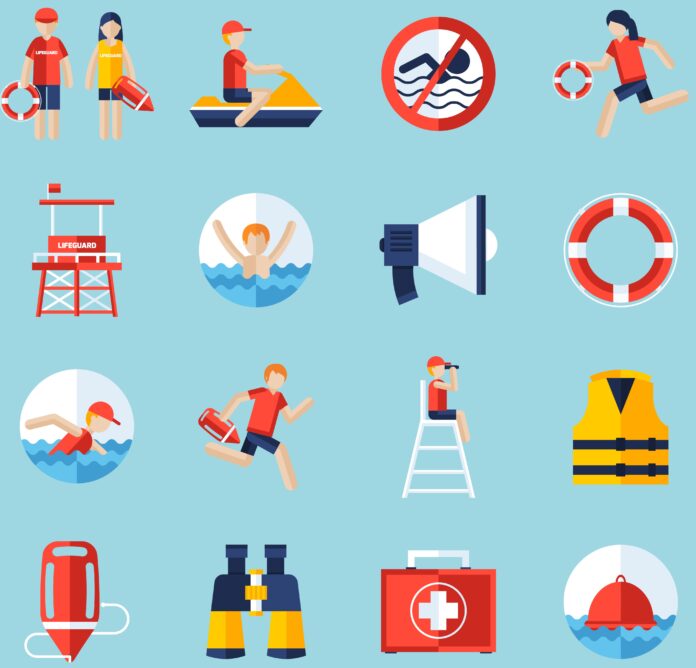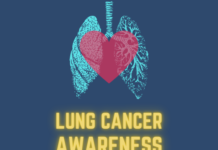Memorial Day weekend is upon us, and for many people this marks the beginning of summer – meaning the hot weather is in full swing and many are cooling off in the water.
While these times can make for great summer memories, it is important to be safe in or near the water to avoid conditions that can be fatal, like dry drowning and secondary drowning. This is especially true for children, as nearly one in five people who die from drowning are children younger than 14, according to the Centers for Disease Control and Prevention.
Dry Drowning Dry drowning is when someone inhales water through the nose or mouth, which causes a spasm in their airway and their vocal chords to close over the windpipe, making it difficult to breathe. The condition is known as “dry” drowning because water does not actually enter the lungs because of the airway closing. Symptoms of dry drowning include difficulty breathing or speaking, unusual behavior, low energy, coughing and chest pain. It is important to know that these symptoms might not immediately appear and can begin within an hour after inhaling water.
Secondary Drowning While rare, secondary drowning is a delayed form of drowning and occurs when someone inhales water into their lungs, causing swelling, inflammation and preventing oxygen from getting into their blood stream. However, this swelling can occur up to 48 hours after inhaling water, so after an incident happens, it is essential that you are monitoring for any symptoms. Similar to dry drowning, symptoms can include low energy and fatigue, difficulty breathing and speaking, unusual behavior, chest pain, vomiting and fever.
“When you unexpectedly fall in the water, it’s only natural to accidentally inhale water while in a state of slight shock. If your child or someone you know has an incident like this, it’s vital that you keep an eye out for any symptoms for at least 48 hours,” explained Dr. Samuel Prater, Associate Professor and Executive Vice-Chair of Clinical Affairs in the Department of Emergency Medicine at McGovern Medical School at UTHealth in Houston and Medical Director of Emergency Services at Memorial Hermann-Texas Medical Center. “If it’s your child, you should consider calling their pediatrician out of precaution, but there are normally red flags if they need serious medical attention.”
Most importantly, if your child or someone you know is experiencing symptoms, call 911 or head to the nearest emergency department so they can receive prompt medical treatment.
Other Water Safety Tips Luckily, there are ways to help prevent drowning incidents from occurring.
“With children, I always recommend starting swim lessons at an early age and having parents put on floaties or life vests on their children when near any water. Parents should also never let their kids swim alone without supervision and ensure they’re following safety measures just like they would in other situations,” said Prater. “If you have a pool at home or a boat, it’s also extremely important that you’re not only following state water safety regulations and guidelines, but also doing everything you can to prevent any avoidable injuries.”
There are several other water safety tips everyone should remember to prevent injuries or life-threatening conditions:
- Know how to recognize the signs of a water emergency and know what to do in those situations, including CPR. The American Red Cross has several guidelines on what to do if someone is in trouble.
- Avoid swimming or driving a boat after drinking alcohol or using certain prescription medications.
- Protect yourself and your children from the sun with plenty of SPF sunscreen and shade. While there are sunscreen lotions more resistant to water, they are not fully waterproof. You should continue to reapply as needed and apply at least 15 minutes before getting in the water.
- Even if you consider yourself a strong swimmer, avoid swimming alone without someone else nearby in case something goes wrong.
- Follow pool rules, such as not diving in shallow water or running on the pool deck.
- If you have a residential pool and small children, there should be fencing around the perimeter of the pool to prevent any accidental falls in the water.
- Always wear a life jacket when on a boat. In Texas, children under the age of 13 must wear a U.S. Coast Guard-approved personal flotation device while underway.
- When driving a boat, always have a passenger serve as an additional lookout to spot anything in the water that might cause danger, and always operate at a safe speed.
- Do your research on dangerous bacteria levels in lakes, ponds and rivers before jumping in.
- Watch out for glass and trash at the pool, beach or lake to avoid cuts and other injuries.
Remember to always stay vigilant when you are by the water and to recognize signs of trouble. Whether you are taking a quick dip in the pool, boating on the lake or playing at the beach, it’s important to always remember these safety guidelines. It could mean the difference between life and death.
Story Credit:
Photo Credit: macrovector/freepik











































